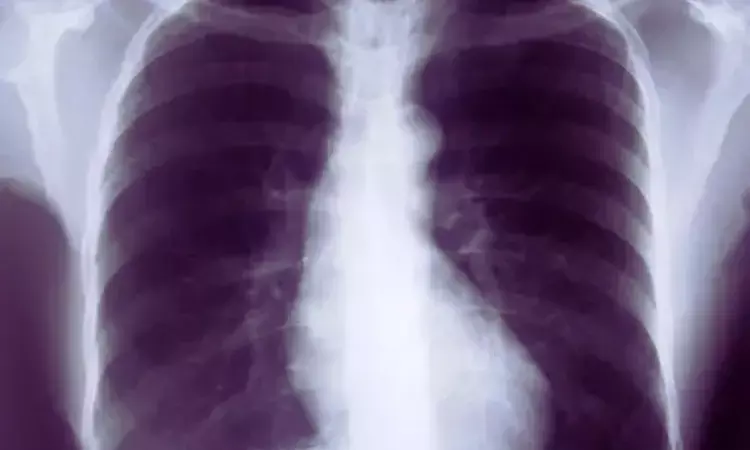- Home
- Medical news & Guidelines
- Anesthesiology
- Cardiology and CTVS
- Critical Care
- Dentistry
- Dermatology
- Diabetes and Endocrinology
- ENT
- Gastroenterology
- Medicine
- Nephrology
- Neurology
- Obstretics-Gynaecology
- Oncology
- Ophthalmology
- Orthopaedics
- Pediatrics-Neonatology
- Psychiatry
- Pulmonology
- Radiology
- Surgery
- Urology
- Laboratory Medicine
- Diet
- Nursing
- Paramedical
- Physiotherapy
- Health news
- Fact Check
- Bone Health Fact Check
- Brain Health Fact Check
- Cancer Related Fact Check
- Child Care Fact Check
- Dental and oral health fact check
- Diabetes and metabolic health fact check
- Diet and Nutrition Fact Check
- Eye and ENT Care Fact Check
- Fitness fact check
- Gut health fact check
- Heart health fact check
- Kidney health fact check
- Medical education fact check
- Men's health fact check
- Respiratory fact check
- Skin and hair care fact check
- Vaccine and Immunization fact check
- Women's health fact check
- AYUSH
- State News
- Andaman and Nicobar Islands
- Andhra Pradesh
- Arunachal Pradesh
- Assam
- Bihar
- Chandigarh
- Chattisgarh
- Dadra and Nagar Haveli
- Daman and Diu
- Delhi
- Goa
- Gujarat
- Haryana
- Himachal Pradesh
- Jammu & Kashmir
- Jharkhand
- Karnataka
- Kerala
- Ladakh
- Lakshadweep
- Madhya Pradesh
- Maharashtra
- Manipur
- Meghalaya
- Mizoram
- Nagaland
- Odisha
- Puducherry
- Punjab
- Rajasthan
- Sikkim
- Tamil Nadu
- Telangana
- Tripura
- Uttar Pradesh
- Uttrakhand
- West Bengal
- Medical Education
- Industry
AI model developed using chest radiographs can aid detection of type 2 diabetes

USA: A team of researchers from the US have developed a deep learning (DL) model that can accurately identify patients with type 2 diabetes (T2D) from routine frontal chest radiographs (CXRs).
"Explainable AI (artificial intelligence) techniques revealed correlations between specific adiposity measures and high predictivity, indicating the potential of chest radiographs for enhanced T2D screening," the researchers reported.
The study, published in Nature Communications, showed that diabetes prediction in type 2 diabetes patients (including poorly controlled T2D) showed an AUC of 0.84 compared to subjects without T2D. On adding the CXR DL prediction to a logistic regression (LR) model with only non-imaging variables, the researchers observed a performance improvement in the AUC.
"Overall, there is a complementary benefit of the ensemble DL model for predicting type 2 diabetes in a large cohort," the researchers wrote.
Deep learning can harness electronic health records (EHRs) for predicting diseases and extracting radiologic findings for diagnosis. With frequently ordered ambulatory chest radiographs, Ayis Pyrros, Duly Health and Care, Department of Radiology, Downers Grove, IL, USA, and colleagues investigated type 2 diabetes detection by combining radiographic and EHR data using a DL model.
The researchers tested their model, developed from 271,065 chest radiographs and 160,244 patients, on a prospective dataset of 9,943 CXRs.
They showed that the model effectively detected type 2 diabetes with a ROC AUC of 0.84 and a 16% prevalence. The algorithm flagged 14% of the cases as suspicious for T2D. External validation at a distinct institution led to a ROC AUC of 0.77, with 5% of patients subsequently diagnosed with T2D.
Dr Pyrros and the team made some important observations from the study:
- First, the DL model performed well in detecting patients with prevalent T2D, with an AUC of 0.84 in patients with BMI ≥ 25 and an AUC of 0.89 in patients with BMI < 25.
- Second, the DL model increased discriminative performance and outperformed clinical LR models across multiple scenarios.
- Third, the prediction of poorly controlled T2D may offer more targeted interventions to higher-risk patients, such as enhanced screening.
- Fourth, the sensitivity (0.74) and specificity (0.72) of DL screening in a cohort with a BMI ≥ 25 exceeds the sensitivity and specificity of the USPSTF guidelines (0.45 and 0.69, respectively) from previously published results using the guidelines.
According to the authors, no other prospective observation study has tested the real-world performance of a DL model for T2D diagnosis based on chest radiographs.
"We developed a DL model that can accurately identify type 2 diabetes patients on routine CXRs," the researchers wrote. "Using this model in population-level health efforts could potentially allow millions of T2D patients to be identified earlier in the disease process."
Reference:
Pyrros, A., Borstelmann, S. M., Mantravadi, R., Zaiman, Z., Thomas, K., Price, B., Greenstein, E., Siddiqui, N., Willis, M., Shulhan, I., Horowitz, J. M., Nikolaidis, P., Lungren, M. P., Mario, J., Gichoya, J. W., Koyejo, S., Flanders, A. E., Khandwala, N., Gupta, A., . . . Galanter, W. (2023). Opportunistic detection of type 2 diabetes using deep learning from frontal chest radiographs. Nature Communications, 14(1), 1-12. https://doi.org/10.1038/s41467-023-39631-x
Dr Kamal Kant Kohli-MBBS, DTCD- a chest specialist with more than 30 years of practice and a flair for writing clinical articles, Dr Kamal Kant Kohli joined Medical Dialogues as a Chief Editor of Medical News. Besides writing articles, as an editor, he proofreads and verifies all the medical content published on Medical Dialogues including those coming from journals, studies,medical conferences,guidelines etc. Email: drkohli@medicaldialogues.in. Contact no. 011-43720751


